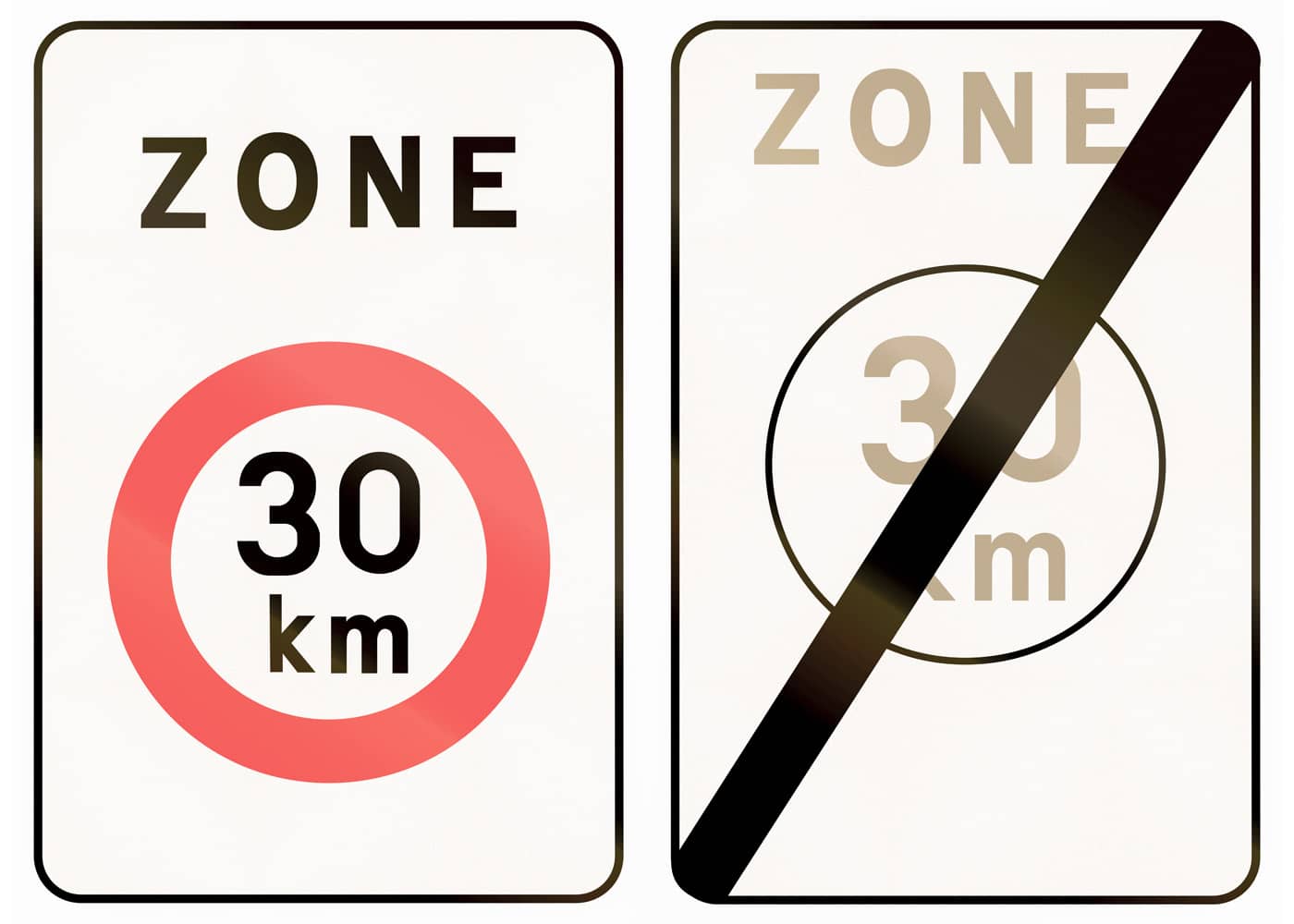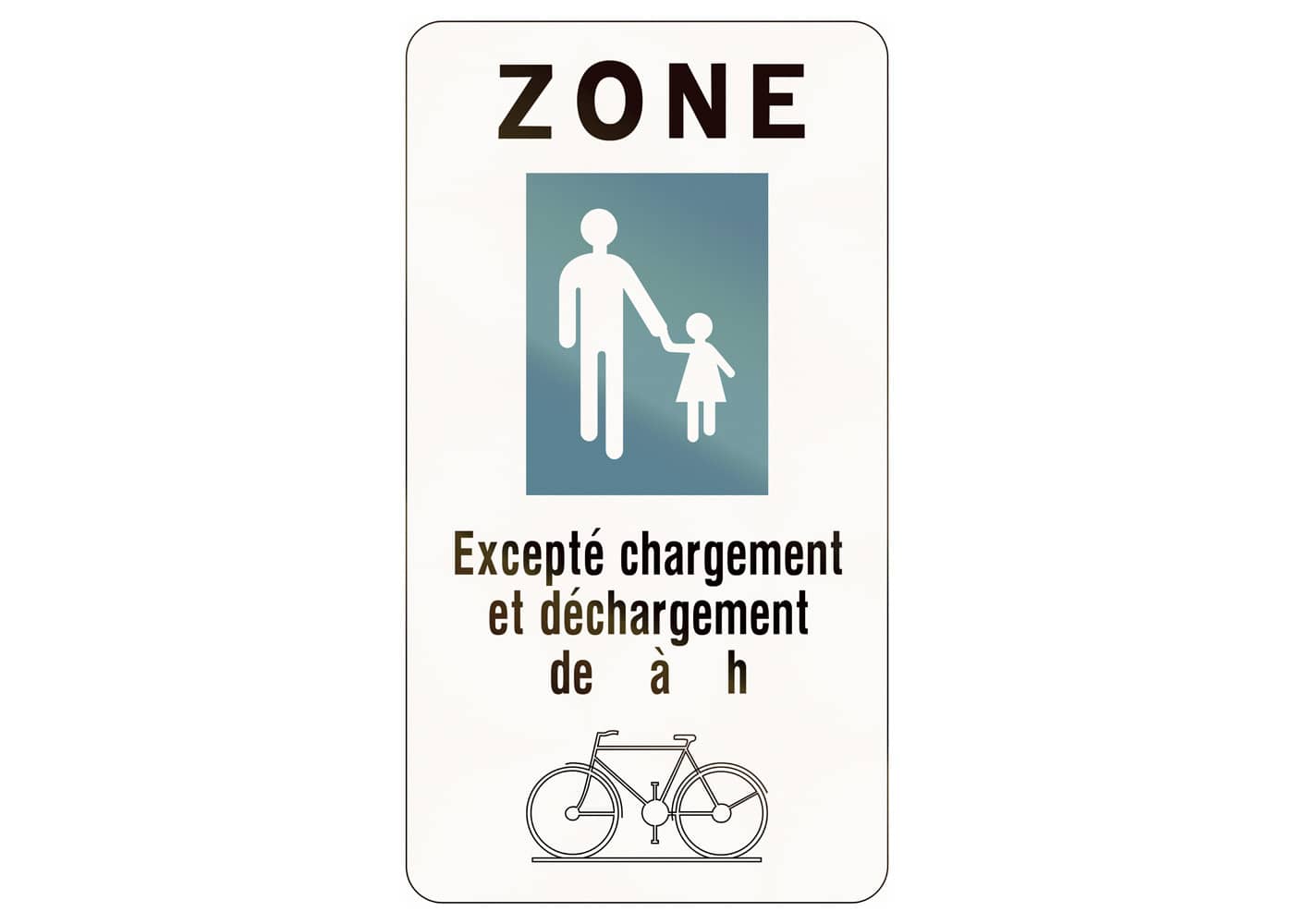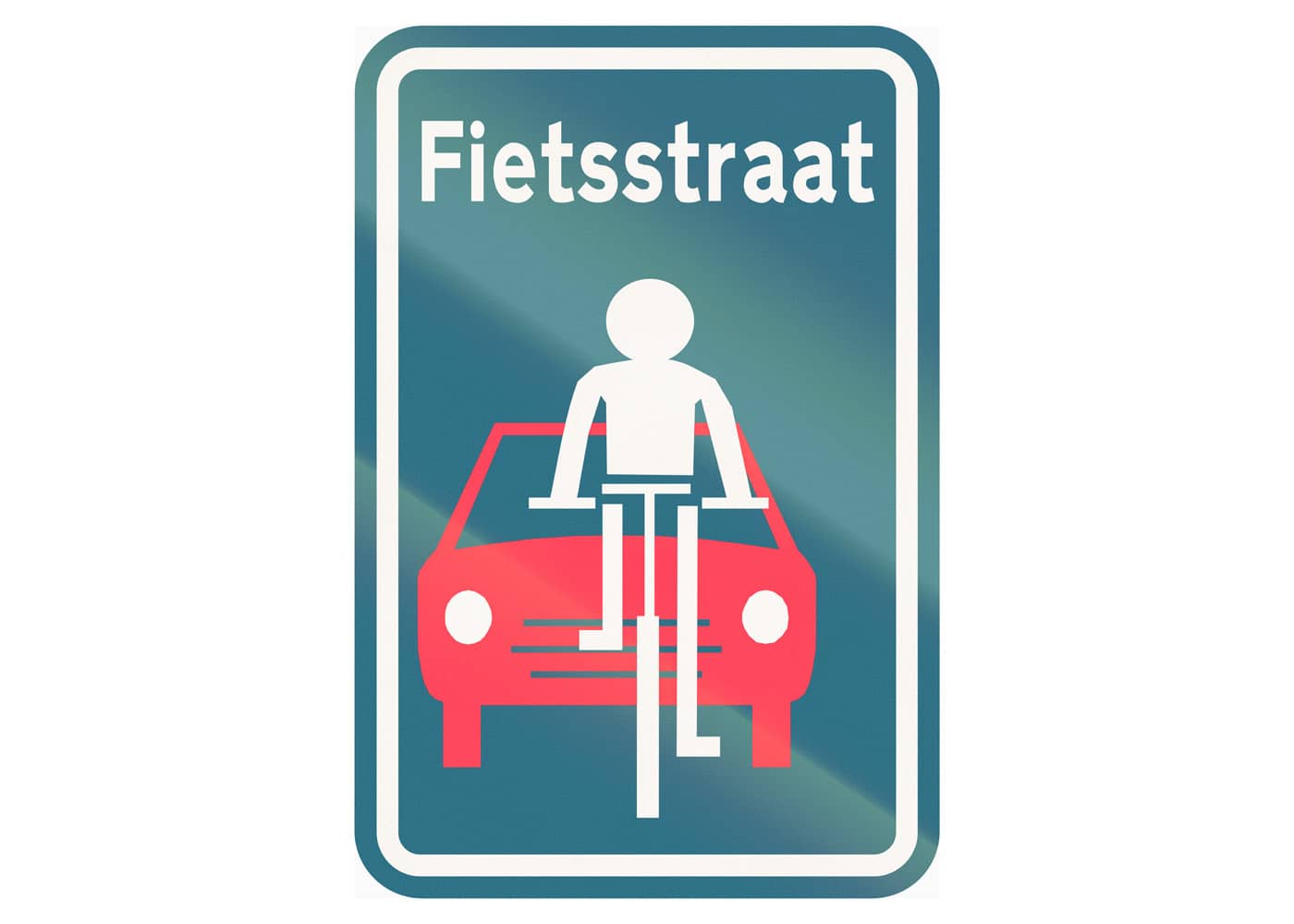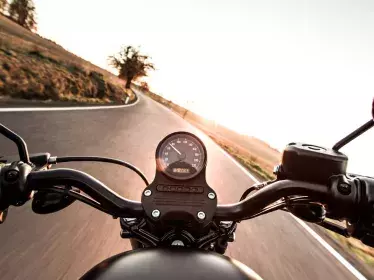When you are travelling in built-up areas, you are committed to different zones, each with their own specific features in terms of speed, priority, access and signage. There are therefore a few rules you need to know to ensure the safety of all road users and to avoid committing a traffic offence.
30 zones
The maximum permitted speed is 30km/h for all vehicles. This applies as soon as the sign indicates the beginning of the zone (F4a) to the end of zone sign (F4b), on all streets and all junctions.
Many city centres and neighbourhoods are adopting this limitation so that all users can move around in a safer and more friendly environment. You will also find 30km/h zones near schools.

Residential zones
This rule emerged in 1978 to designate urban areas which are predominantly residential. The maximum permitted speed is 20km/h and drivers cannot disturb or endanger pedestrians even if this means they have to stop. Pedestrians may use the entire width of the public road provided that they do not impede traffic unnecessarily and play is permitted. You should therefore take extra care. These zones are marked with signs F12a and F12b. Parking is prohibited except in areas delineated by a specific marking or in areas marked with a sign indicating permission.

Contact zones
These zones have the same rules and signs as residential areas. Residential use is not the only criterion, this also extends to places where you find craft, commercial, tourist, school or recreational activities. Local residence takes priority over traffic without a pedestrian zone being created.
Pedestrian zones
You also know them as pedestrian access and traffic is prohibited if sign (F103) is present. The layout is exclusively designed for pedestrians and cyclists in order to enhance commercial or cultural appeal.

Cycling streets
When certain streets cannot accommodate a cycle lane and car traffic is still essential, this zone is then favoured and indicated by the F111 sign. The maximum speed is 30km/h and cyclists are given priority. They can use the entire width of the public road if it is a one-way street or half the width if it is open to both directions of travel. So you can't pass them.

School streets
30 zones are mandatory around schools and, since 2012, school streets have been experimented with to increase the sense of safety and encourage children to walk or cycle to school. Car traffic is prohibited at school start and end times. Signage details the access conditions (C3). Local residents may be authorised to enter but must drive at very low speeds.
Low-emission zones
Access for motorised vehicles is specific to the cities that apply these zones. You will find all the information in this article.
Holiday or accommodation areas
These areas refer to streets where the function of accommodation or holidaying is more important than traffic. You will usually find the 30 zone signs here.






